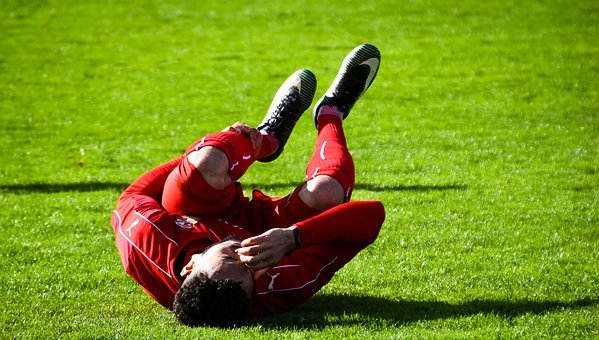Has your doctor ever said that your injury is serious or chronic? What is the difference? You need to know exactly what and how to do it. The symptoms are different and the methods of treatment are different. After all, it is your own body and you will be affected by it.
Acute injury
Acute injuries are sudden injuries that are generally associated with traumatic events, such as colliding with another player during sports or falling on a bicycle. During this period, the body changes and is often negative. Traumatic blows can cause bone fractures, muscle tears, or ligaments. Sudden, sharp pain can be experienced, which is often immediate, severe swelling, and even cold purple areas, indicating poor blood circulation at the injured site. If the knee ligament is torn and you cannot put your weight on it, you may lose stability.
 Chronic injury
Chronic injury
Chronic damage is also called abuse damage. As the name suggests, it is caused by overuse of certain parts of the body through exercise or exercise. They develop slowly and last a long time. Symptoms are mild compared to acute injury management in Canberra and there is less pain causing them. This causes the patient to ignore the injury and continue his activity. Over time, more problems arise. Common symptoms of chronic injuries include pain every time you participate in sports activities, swelling after every game, and persistent pain when you do nothing. In other words, chronic injuries threaten your lifestyle by limiting your participation in many things. Some examples of chronic damage are stress fractures caused by repeated loading of certain parts, resulting in small cracks in the bone each time. Tennis players also suffer from tennis elbows, which generally cause pain in the vicinity of the elbow effectively due to overuse.
If the site is injured due to an event like tearing the muscle due to overuse or direct injury, such as an ankle sprain it breaks small blood vessels in and out of the area. Then blood flows into the area to transport the product, chemicals necessary to treat an injury. This extra blood and other products have characteristic redness, sensitivity and inflammation associated with female athlete management in Canberra.
Regardless of whether the injury is chronic or sudden, it must be treated immediately. The first step is to immediately stop all sports activities and perform R.I.C.E. The more dangerous of these two injuries are chronic injuries with minimal pain, but they can last a long time. Therefore, the patient does not know the full extent of the injury.
Ice is a very useful tool, and I think it is required after acute trauma. Ice can delay bleeding, reduced area, inflammation, reduced muscle protection and provides analgesic effect (reduces pain).